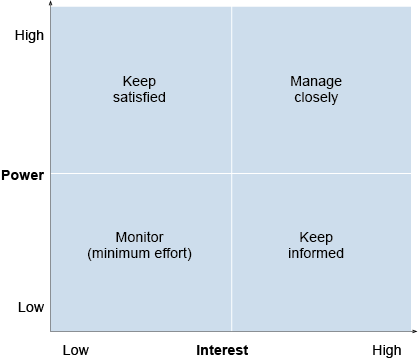

Communication in Family Business - The Cornerstone to Successful Reopening
Lessons from Family Business & Communication Experts
If you missed our first online seminar, Communication in Family Business - The Cornerstone to Successful Reopening - you can watch the webcast on our YouTube channel.
The 45-minute webinar saw Padraig McKeon (Associate Lecturer of Communication, DCU) and Dr Catherine Faherty (Assistant Professor of Enterprise, DCU) present key learnings around the topics of communication, listening, trust and conducting a stakeholder analysis. Below we summarise the lessons you can apply to your family firm through practical, actionable steps.
1. Know who matters to your business
A vital aspect of communication is knowing who your audience is and what role they play in your family business. Padraig McKeon offered a simple and effective tool in which you can identify your firm's various stakeholders and their impact on your business. This tool is called a Stakeholders Analysis. Stakeholders are any group or individual person that can affect or is affected by the objectives of your business. Put simply, stakeholders are those who have influence and/or interest in your business.
Benefit of mapping your stakeholders: The main benefit of using a stakeholders analysis is identifying how much monitoring, managing and/or informing you should provide to your firm's various stakeholders.
Examples of your firm's stakeholders may include: Employees, suppliers, customers, senior management, Board members, and so on.
The diagram below outlines how you can map your firm's stakeholders. Across the horizontal axis is 'Interest' and across the vertical access is 'Power', with both axes ranging from low to high. Determining the level of power or influence a person has on your business, as well as the interest or investment they have in your business will allow you to identify how best to communicate with them - such as the frequency of communication, sharing of information and effort required to maintain a positive working relationship.

(Figure 1: Diagram depicting a Stakeholders Analysis Matrix)
Example scenario: Where would your business partner feature in a stakeholder analysis? As business partners have a high level of influence and power on the firm's operation and strategic decision-making and typically have a high level of interest and investment in the firm's performance, they would feature in the top right of the matrix - 'Manage Closely'. Communication, information-sharing and time spent on this relationship will require high levels of effort in comparison to firm stakeholders that have less influence and interest in the business' performance.
2. Hold weekly family meetings
Family business research has shown that firms which hold regular family business meetings outperform their counterparts that hold infrequent family meetings. Family meetings are essential for normal day-to-day operations of the business, but prove critical during times of crisis, uncertainty and organisational change. The impact of routine family business meetings on performance, orientation and relationships is significant, whether this is in the form of a formal 'Family Office' or around the kitchen table! Scheduling this time for all active family members to communicate and be listened to is crucial to the success of the family and the business.
3. Family businesses are the ONLY trusted business form in Ireland
Dr Catherine Faherty spoke to the importance of trust in building and maintaining positive family business relationships with all stakeholders. Interestingly, a recent 2020 study showed that family firms are the only trusted business form in Ireland, as compared to public, private and state-owned businesses which received an overall rating of 'distrust' among the Irish public. This finding is a welcome one for Irish family firms.

(Figure 2: Edelman Trust Barometer, 2020)
So what?
... Leverage this to your advantage and continue to build trust and positive relationships.
Leveraging this advantage in your communications and family business strategy is an excellent way for family firms to stay ahead of their non-family competitors.
It is important for firms to maintain and build upon the existing trust they have built with their stakeholders and wider public into the future. Clear communication, active listening and transparency is the way to build trust with your stakeholders, as well as knowing their perspective and where they align with your business. This is where your Stakeholders Analysis will be useful!
Questions or Queries?
Please don't hesitate to get in touch with our family business team at familybusiness@dcu.ie. We would be happy to answer any queries you may have and provide free guidance and resources.
